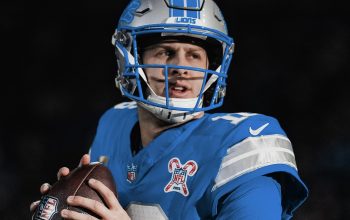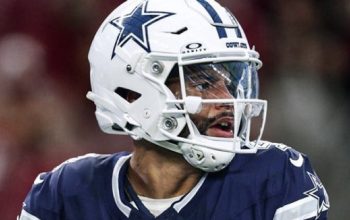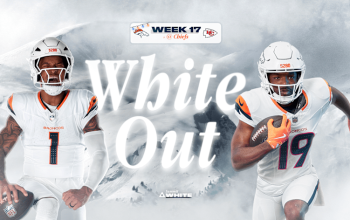In 1960, Boston Globe cartoonist Phil Bissell, working for $25 a day, was handed an assignment that would change his life—and the lives of fans of the brand-new AFL football team coming to Boston.
“Sports editor Jerry Nason came to me and he said, ‘They’ve decided to call the team the Boston Patriots. You better have a cartoon ready for tomorrow’s edition.’ I sat down, I drew that cartoon original of Pat in about 45 minutes,” Bissell said. “I thought about it for about two minutes and went to work. I had to get the day’s work out.”

Pat Patriot gets his name from the “little Irishman behind Pat” in the original cartoon, who says, “Tis a foine name… PAT-riots!!” He served as the Patriots logo for more than three decades, from their second season in 1961 through 1992. When the team ditched Pat for its current Flying Elvis logo in 1993 (with a minor color change in 2000), many fans were distraught.
 “Personally, I like the new logo, but I am in the vast minority,” said Bryan Morry, executive director of the Patriots’ hall of fame, The Hall at Patriot Place. “People love the old Pat Patriot logo. All the former players certainly prefer it. Most of the fans that I talk to about it like the old one, especially if they’re older fans.”
“Personally, I like the new logo, but I am in the vast minority,” said Bryan Morry, executive director of the Patriots’ hall of fame, The Hall at Patriot Place. “People love the old Pat Patriot logo. All the former players certainly prefer it. Most of the fans that I talk to about it like the old one, especially if they’re older fans.”
Bissell, who refers to Pat Patriot with fatherly adoration as “old Pat” or “my Pat,” has an explanation for why his creation still holds a place in fans’ hearts.
“Things are going so fast today,” Bissell said. “People like to have their feet on the ground, and my old Pat, when I drew him back in 1960, he had both his feet on the ground. He was ready to do battle.”
 Bissell, who turns 90 in just over a week on February 1, has received multiple inquiries about the origins of the original drawing of Pat Patriot, including from an auction house that said it could fetch up to $1.5 million for it and from current Patriots owner Robert Kraft, who wrote a hand-written note telling of how he enjoyed reading Bissell’s cartoons growing up in Brookline, Massachusetts. (Bissell describes the beginning of his phone conversation with Robert Kraft like this: “Phil Bissell?” “Yeah?” “Yeah, this is Bob Kraft calling.” “Yeah, pull the other leg!”)
Bissell, who turns 90 in just over a week on February 1, has received multiple inquiries about the origins of the original drawing of Pat Patriot, including from an auction house that said it could fetch up to $1.5 million for it and from current Patriots owner Robert Kraft, who wrote a hand-written note telling of how he enjoyed reading Bissell’s cartoons growing up in Brookline, Massachusetts. (Bissell describes the beginning of his phone conversation with Robert Kraft like this: “Phil Bissell?” “Yeah?” “Yeah, this is Bob Kraft calling.” “Yeah, pull the other leg!”)
The whereabouts of that original drawing are a source of some consternation for Bissell.
“In those days, I was told I worked for the paper, they owned everything I did, and that was all there was to it,” he said. “And I told them at that time, a cartoonist should be able to get his material back, and what they were being paid—what I was being paid—should just be for use of that cartoon.”
After submitting it for publication, Bissell never saw the original drawing again.
“When the cartoon appeared in the paper, Nason took it, he gave it—G-A-V-E—he gave it away to Billy Sullivan, who was the owner of the Patriots,” Bissell said.
To make matters worse, the drawing would meet an untimely demise. As Bissell describes it, “It went up in flames in Billy Sullivan’s summer home on Cape Cod with all the original cover programs.”
That said, Bissell describes his relationship with Sullivan, who owned the Patriots from 1960 to 1988, as one of the best he’s ever had.
“When he got the cartoon, he wrote me a very nice letter thanking me because Jerry said I gave my permission for them to have it. It never happened,” Bissell said.
Upon learning about this miscommunication, Sullivan called Bissell into his office and not only paid him $100 for the use of his illustration, but hired him to create the artwork for the team’s now-famous program covers—placing an inordinate amount of trust in the cartoonist.
“Billy Sullivan told me, ‘I don’t want to see any of your covers until I enter the stadium, because when I see the covers in the hands of the people, and they are getting a smile out of it, I know the cartoons have been successful,'” Bissell said. “And that’s the way Billy Sullivan worked. He was an awful good egg.”
As he tells it, Bissell has drawn the likenesses of more than 60,000 athletes and political figures. He’s been drawing all his life, and received his first paycheck at the age of seven.
“They’d give a wiggly line in the local newspaper on Sunday, and if you could make a cartoon out of the wiggly line, they’d send you a dollar,” he said. “It kept me in bubble gum for years.”
His most famous creation earned him the nickname “Pat’s Pa,” which is also the title of the book Bissell wrote about the origins of Pat Patriot—and the reason for the vanity license plate on his car.
More than two decades after the team adopted the Flying Elvis logo, the retro Pat Patriot is as popular as ever—in spite of one significant fact. “The team has had so much success wearing the new logo,” Morry said. “I think there’s that sort of affiliation with the logo and the success.”
Even though the team’s run of Super Bowl titles has come with Flying Elvis on the helmet, there’s one player who’s a believer in Pat Patriot.

“Tom Brady always wears the knit cap with my Pat on it,” Bissell said. “And he always tries to align it so it’s just right, but a lot of times it might be on the side, but he’s always got Pat right up front there.”
Bissell is quick to point out that when the Patriots lost to the Broncos on November 29, 2015, ending their bid for a perfect season and breaking a win streak that dated back to last season, Pat Patriot was not to blame.
“This game found Tom’s hat becoming sopped because of the falling snow,” he said. “He asked for a dry hat and the next sideline shot found Tom standing there with a dry hat, but not with Pat on it, but one with the flying Elvis logo! The winning streak was broken that day.”
Bissell still has a great relationship with the team—he describes being introduced on the field as an honorary captain by longtime broadcaster Gil Santos before a game in the 50th anniversary season of 2009: “70,000 people roared, and my feet went up off the ground.” But Pat’s Pa is not a fan of Flying Elvis, or the direction that NFL logos are taking in general, for that matter.
“It shows too much—to me—similarity,” he said. “Today, if you’re seeing, from a distance, on the playing field, on your television set, you look at the uniform, well, is that the Ravens or is the Patriots or is it the Broncos? That logo just doesn’t show up on the helmet the way they did years ago.”
Pat Patriot and Flying Elvis are part of the larger story of the Patriots brand, which started with an illustration sent in by fan Walter Pingree, whose tri-corner hat served as the team’s logo in the inaugural season of 1960.

“We’ve never found an actual original helmet with the tri-corner hat logo on it because they pulled those decals off and put the new ones on,” Morry said. “We actually have one upstairs [in the museum] but it’s a reproduction.”
The Patriots’ now-global brand finds its origins in the civic pride Bostonians take in their city’s role in US history.
“In many ways, our country’s freedom started here,” Morry said. “Our country’s breakaway from the English monarchy started here in Boston, and so many great figures, whether it’s Paul Revere or Sam Adams, I just think it really captures the spirit of Boston history.”
That patriotic pride took on new significance in 2001.
“When you go back to our first Super Bowl win, that came on the heels of the September 11 tragedy,” Morry said. “I think our team, our community, felt really good that a team whose history tied back to our country’s freedom was able to have success that year. Our colors are red, white, and blue, and our name symbolizes our country’s freedom. I think our brand has a little bit of that element that transcends football.”
Pat Patriot, who was born in 45 minutes by the hand of a talented cartoonist, has been part of the story since before the team’s first game, and with the popularity of the team’s old logo, continues today.
“It’s been one hell of a ride,” Bissell said, “and it’s still going!”



















